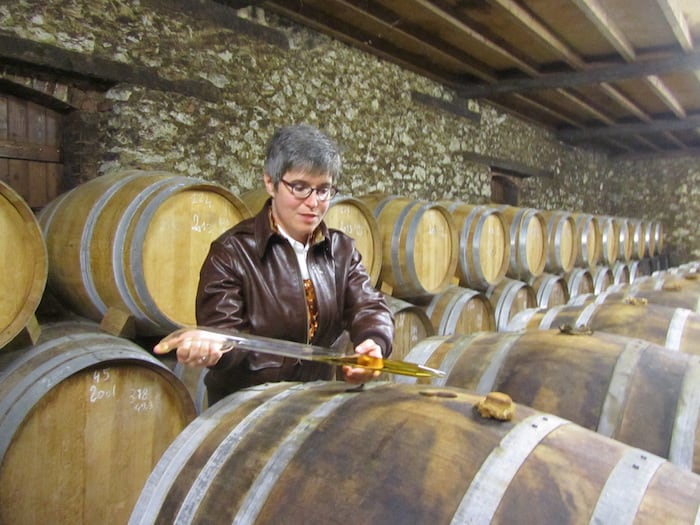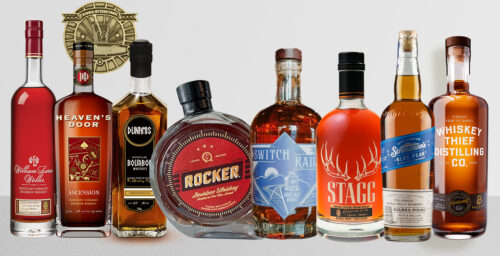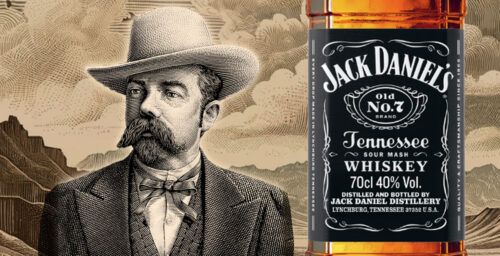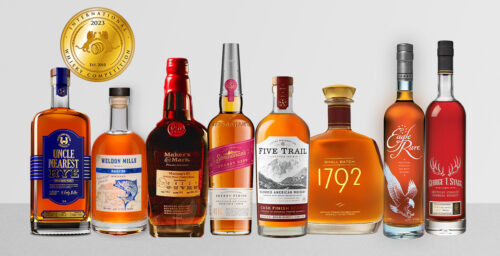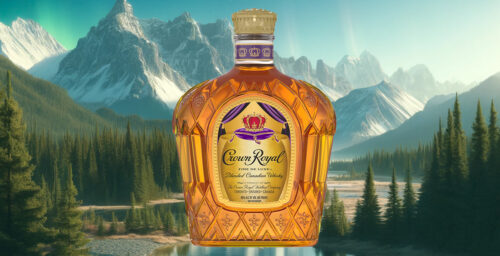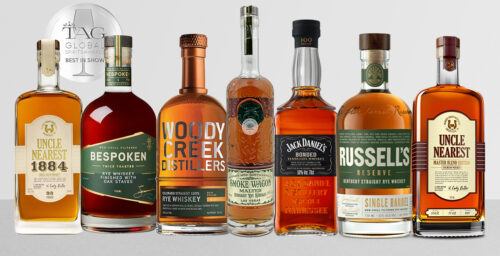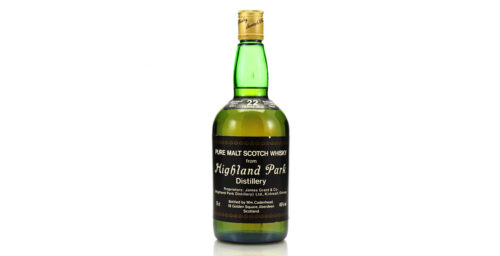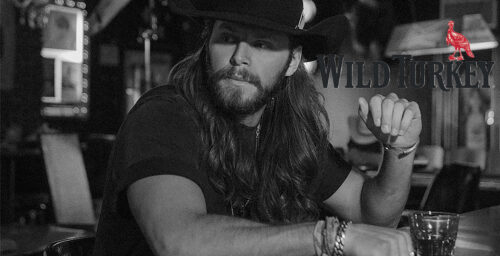Nancy Fraley is a professional “nose” who is the owner of Nosing Services out of Berkeley, California. She is an international and domestic consultant for both major industry and craft distillers for quality assessment and custom blending. She is also the director of research for the American Distilling Institute, creator of the American Craft Whiskey Aroma Wheel, and a teacher of classes on Olfactory and Sensory Analysis for Craft Distillers. Fraley has a Master’s Degree in Indo-Tibetan Buddhism from Harvard University and is a graduate of the University of San Francisco School of Law, with a concentration in International Human Rights.
We spoke to Nancy Fraley about her unique skills, her work with distillers on expert blending and distillate maturation, how to determine and remedy distillation problems, and about her personal pleasures with distilled spirits.
Q: When did you first get a sense of your special abilities as a nose?
A: My first exposure to any kind of distillate was at my father’s wedding, when I was about six or seven years old. I inadvertently had a sip of some bourbon and coke and thought wow, this is great stuff! From childhood I’ve always been into sensory aspects and smell. There were times in the past, before I even really knew anything—and although I’m not a wine person in the least—I would go to wine tastings and I would be able to pick out characteristics.
It wasn’t really until I started working at Germain-Robin that I realized what I really wanted to do was be a master blender. But I’ve always known that I had that ability.
Q: What do you bring to a distiller that they couldn’t get without you?
A: Part of my mission is to bring old-world maturation and blending techniques. What the French might call elevage, and also assemblage, the art of blending. I bring these old-world techniques from what I learned from Germain-Robin, what I studied in France, and from other distilling traditions. I think they are more sophisticated than what we’ve been doing in the bourbon world for a long time.
So, dependent upon the legal parameters for such things as bourbon, I try and bring French blending techniques to the table. Slow reduction techniques, going from cask to bottling strength for example. And if distillers have problems in their distillate, I can identify what its faults are and help devise remedies to clear those up.
Q: You just came back from giving classes at Moonshine University in Kentucky, and you train distillery staff onsite too. Is the training you offer to distillery staff different than the materials you cover in your classes?
A: The material covered in my classes is geared towards distillers and distillery staff—fully geared towards production. In a general sense there’s no difference, but the caveat is that when I actually work with a client onsite at a distillery, I take into account what they’re making, what their needs are. Considering all of the individual aspects of what makes them unique, and I tailor what I’m doing to that.
It could be based on what I teach in either my sensory analysis or my blending and maturation classes. It’s not like a one-size-fits-all: if I’m building a maturation program for a distillery client, those things tend to be uniquely tailored. You definitely want to draw out what makes each distillery unique to help them develop their own personality.
Q: Without being too technical, what aromas or odors in the whiskey distillation process are “tells,” in the sense that you know the product is on the right or wrong track, or might be just right?
A: Let’s talk about faults: you could either divide things going on in that distillate to either taints or off-notes. Taints are things that could come into the distillate from the environment, such as bacteria or mold or something from the water, like geosmin. Off-notes are notes that would arise naturally in the fermentation and distillation process, but maybe they’re too pronounced.
Something that the distiller might need help with is if I’m smelling the presence of vinegar, for instance. That tells me is that they have an acetic acid issue, and that’s a problem that would be coming from fermentation. An infection or the smell of lactic acid bacteria, sort of a sauerkraut kind of aroma.
Oftentimes you can tell too if they haven’t made their cuts right in the distillation, depending on if they’re going to age a bourbon for four to six years, but the cuts are really tight. Then I would help them to be able to distill in a way so that they’re putting away a product that can mature properly.
Q: When you say the cuts are tight, do you mean they’re not removing enough of the heads or the tails?
A: By tight I mean that it’s just all hearts. So if you’re doing long-term maturation, you need to have just a little bit more on either side of the hearts. So you need to have just a little bit more heads and a little bit more tails. Just a little bit more of the fusel oils in there too. The art is how much is enough.
That said, I don’t really put myself out there as a distillation expert. I really put myself out there as a maturation, warehousing and blending expert. But I can still tell when things have gone wrong through the entire process.
Q: How difficult is it to adjust a distillation that has serious problems? Is it ever unsalvageable, so that they will simply have to dump the batch?
A: Yes, with certain types of bacterial infections, depending on what the threshold is, sometimes you do have to just dump it. Sometimes it can be salvageable if it’s something that is not too bad. It depends on the fault, but you might be able to take care of the problem through blending.
At Moonshine University I had some samples for the class to taste that had an exceeding amount of acetic acid or dimethyl sulfide (DMS), giving a very sulfury, cabbagey, oniony effect, where there’s nothing you can do with that distillate. You do have to just throw it away.
Q: Were those samples derived from an actual attempt at distillation or did you create them?
A: Those were attempts at distillation. Samples I’ve gotten from my clients. I have a whole basement that has a collection of faults down there. Anything you could imagine that could go wrong that I use for teaching purposes.
Q: Do you have to bring different skills into play for international distillers and their products, say for a scotch or Japanese whiskey? Skills that are different or draw on different abilities of yours than for an American bourbon or whiskey?
A: Yes. For example, I have some Australian clients, some Haitian, and Canadian. I find that having a legal background definitely helps me to learn whenever I need to learn about their liquor laws. What constitutes whiskey, what the regulations are. In strange ways, my academic background does come back to help not just international clients, but in general for my clients here in the States.
Q: On the distillation and maturation issues for international distillers, they’re asking you the same kinds of questions and you’re giving them the same kinds of answers in general as you would a stateside person?
A: Yes in general, but then I also take into account products that are made in the style of what they do in that country. So for Canadian clients, if you want to make malt whiskey for example, they have very different cooperage requirements than what we have in the states. They’re allowed to do different things. So in that sense, while in general I’ll give them much of the same information, it would be particular to them.
One thing that really does vary from place to place, and from climate to climate, and even from product to product, is in working with clients that want to lay a spirit down for long-term maturation. Whether it is whiskey, rum, whatever, they’re often dealing with unique warehousing conditions.
For example, I have clients that are in very cold and arid places. So we have to tailor their warehouses so that they’re getting enough humidity for the barrels. That they’re actually getting enough heat in their warehouse for the maturation cycle to continue. You have clients in other places, say in Haiti, where it’s the exact opposite. It’s hot and humid and we have to deal with their unique issues, and in places like Australia too.
For example, brandy does not mature the same way that bourbon does. It needs more humidity than bourbon. So I take those kinds of things into account as well.
Q: Are there distillation practices in a high-volume distillery that could be improved by using practices at a craft distiller or vice versa? I know that the commercial interests of the distiller are an overwhelming factor for the high-volume people, but can you think of anything that either of those two types of distillers do that could be useful for the other?
A: There’s a lot to that question. First of all, the craft people often don’t have quality-control programs in place. Or they don’t have sensory panels, the way a large company can have a number of people sitting down on the panel. And oftentimes craft distillers, if they’re laying down a whiskey for long-term maturation, they might not know how to make the cuts the proper way, as I mentioned before.
So, if they lay down their whiskey for four, six, eight, ten years, it might turn out very over-oaked and the distillate itself will be covered up. With large companies, it really depends on the company culture. Some are very craft-like, for want of a better term. But sometimes on the big side, the heart and soul gets lost.
But one thing I learned from my mentor, Hubert Germain-Robin, was that what is most important is that whether it’s a large distillery, a small craft distillery or a micro-distillery, it’s the attention to detail and making sure that every step of the way, that they’re doing things for quality—not taking shortcuts. That’s something that both sides can definitely learn.
There are some producers who while they’re putting out a large volume of spirits, their methods are what you might consider craft. They’re really taking care and pains at every step of the production process. They’re being very attentive to everything they’re doing, very detailed, making sure everything is done properly.
I’ve adopted that from Hubert and I believe it too, because I’ve worked with folks at large and small distillers. That attention to detail and attention to quality, having patience with what you’re doing, not trying to rush it is really what matters most, for both big and small.
Q: When you’re suggesting a custom blending of elements of distillations, do you make precise suggestions such as, “This needs 2% more rye” in the case of a mash bill? Or since you deal more with the whiskey after distillation, say for a blend, “This needs 2% of some other distilled spirit” that the distillery has on hand?
A: Yes, I tend to get really precise. There’s never really 20% of this, 80% of that. As long as you’re staying within the legal parameters prescribed for the spirit they are making, the custom element comes from really making things precise. And as a blender, there are three things I’m always looking for that are very traditional to do with the blender: quality, consistency, and complexity. You want to have each batch be consistent, or at least be able to recognize the house style, and you want to always make sure your quality is great, and that it has complexity.
When I’m doing a blend, there are times when maybe 0.5% of a component is really all you need to make that whole thing pop. That’s where over time, as one becomes more skilled in blending, you can feel the stuff intuitively, if that makes sense.
Q: Do you ever have strong disagreements with distillers on what’s best for their product?
A: Yes, I certainly have, but at the end of the day, because it’s not my product, they will have the final say. There are things that I would strongly advocate for, although I certainly understand why a distiller might not do them. There’s always an ongoing negotiation between what I would consider best practices and to make the best quality spirit that you possibly can, and what the commercial and financial realities are of the distillery.
There are times I think a whiskey really needs at least another year or two to lay down before it hits that point of maturity where I feel like they can really put out the best product they can. Depending on how they’ve set up their distillery and business plan and their business model, they might not always have the luxury of doing that. But I would certainly advocate, and if I can start with them from the beginning, we can plan that kind of thing in advance. Although I certainly can appreciate those commercial and financial realities as well.
Q: Have you ever worked with or advised on some of those more unusual distillate grains that are coming out now? Like quinoa or amaranth, or triticale, those odd grains that are sometimes showing up, usually from smaller craft spirit makers?
A: Yes. I’ve definitely had some experience with the heirloom grains—heirloom corns, for example. I find I’m not as fond of grains like spelt or millet for long-term maturation. From the early samples that I received from distillers that were doing that, I was not really pleased with the results. That said, I’m finding that heirloom corns are an exciting area. There’s a whole world of malt, for example. A little bit of black patent malt or chocolate malt can completely transform a whiskey. But you have to be very careful in how you use those. They can completely take over.
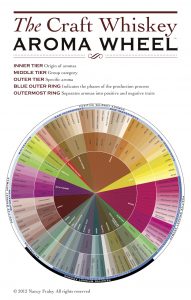
Q: Can you explain the basis of your Aroma Wheel?
A: I think I started with that in 2009. It took two or three years to complete the aroma wheel. It’s an American craft whiskey aroma wheel, although it could be applicable to what other people are doing in other places too. So it’s really geared towards production and not to a consumer, although if I ever have time one of these days I’ll create one for the consumers as well.
It looks at where aromas come from, starting with raw ingredients. So I actually break down what you get from spelt or millet or triticale and blue corn, as well as rye wheat, yellow dent corn, that sort of thing. So I look at raw ingredients, aromas that come from fermentation, distillation, through maturation. You’ll see this on the wheel: I also identify positive aromas and negative aromas. I also have off-notes on there too and how those overlap through the production process.
I’ve been with Ironroot Republic since the beginning and some of the aroma profiles that we’ve been able to create are really off the charts. They were inspired by Balcones, but they’re using a whole host of other heirloom corns and doing some really exciting stuff.
One interesting project was done with Joseph A. Magnus. The original Magnus distillery was started in 1892 or 1893, closed its doors in 1917, and the guy’s great-great-grandson came along and wanted to start up that distillery. They had a bottle of the whiskey that they had stored back in 1892. So me and Dave Scheurich, the former master distiller of Woodford Reserve and also Richard Wolf, who used to be the GM of Buffalo Trace, we got a needle and syringe and went through that whiskey. We analyzed this bottled whiskey that had been in the family for all this time and found that they were using sherry barrels, at that time, for bourbon. So for them I recreated a modern version of that whiskey.
Q: Did that original whiskey actually hold up?
A: Yeah, it did. It was incredible and I still have some of it, though the original bottle was kept with the family, but I actually have a little bit of it in my own lab. We all agreed that it was one of the best bourbons we’d ever tasted. With them though too, I’ve been resurrecting some things: I just created the first blended bourbon, in the category of blended bourbons they have; I don’t think anybody has done anything with it since before prohibition.
Q: What do you think is an absolute must in a taste profile for an American whiskey, and can you distinguish it from bourbon? I’m talking about the things people would usually talk about: caramel, vanilla, maple. What is the heart of the significant whiskey aroma and profile consumers are going to get from those American spirits.
A: I’ll paint the broad stroke for whiskies in America: in part, given the regulations that we have in place of needing to use new charred oak. It doesn’t have to be American, but it does need to be new char and charred oak. But it’s that American whiskies in general tend to have much more of an oak profile.
So the majority of the flavor, and of course that depends on how long the whiskey has been laying down too, but 50% to maybe 75–80% of the flavor profile is coming from the oak. And that’s a thing that you see in rye or bourbon, and of course wheat whiskey.
That would be the distinguishing factor that would mark American whiskey pretty much from the rest of the world: the way that we use our cooperage with the requirements of new charred oak. Which of course will give it a lot more vanilla, toffee, caramel types of notes. Because they’re not shy on the oak, American whiskies in that sense are probably not as balanced as some whiskies that you might find in Scotland, for example.
And I think that is huge, that’s really what determines flavor. Even more so than the creaminess of the corn in a bourbon or the spiciness of rye or the kinds of soft, sweet wheat notes that you might get from a wheated bourbon, or just from a wheat whiskey in general. Also, our whiskies tend to be a little on the angular side. That too has to do with the fact that we’re not shy with the oak.
Also, in general flavors depend on the climate of where the whiskies are laying or being matured. Certainly in places like Kentucky, the warehouse conditions tend to be hot, at least in the summertime. So the proof in general will go up more here in the states than it might other places. So it just kind of lends itself to a little bit of a hotter, more aggressive style in both of those things.
Q: Since your nose is your business in many ways, what do you do when you get a cold?
A: Well, that’s probably the rare time that I actually have to sit and do my office work. My billing, invoicing, that kind of thing. Because obviously, when I have a cold or the flu or my sinuses are acting up, I literally cannot work. But what might be 50 or 60 or 70% for me is still pretty good and still pretty astute. When I’m getting over a cold or the flu or whatever, I will do an analysis maybe a few mornings in a row, just to check how I’m doing. Or maybe I’ll start it off in the morning and try it later that day, depending on how I’m feeling. Or if there’s not a time crunch on it, I’ll wait a few days and come back to it. And when I do that, I often find things that I didn’t notice before I was sick.
So I really, really, really do like to wait because my whole business is really focused on my nose, whether it’s analyzing a distillate for faults, or what I do the majority of the time, which is the blending aspect. I really need to be on for that. And when I’m on, I’m really on.
Q: Are you able to enjoy drinking spirits without analyzing them?
A: Yes and no. If I don’t want to think about something, then maybe I’ll make a cocktail. But I just can’t help but analyze things, even when I’m in my downtime enjoying something. It’s like if you’re an attorney and you’re used to arguing all the time, it’s hard to stop. Even if you’re not consciously looking for it, things just seem to pop out. And you think, oh god, I really don’t want to be doing this right now, but there it is. But that’s not saying I can’t just sit down and enjoy something. I do plenty of that.
Q: Do you commonly drink whiskey when you’re enjoying a spirit? And you said you like to have it in cocktails too. So do you consider yourself a mixologist of sorts? Do you experiment with things like bitters and infusions?
A: Not really. I tend to prefer to let the distillate speak for itself. That’s not saying I don’t like cocktails, but I like them very simple, like an Old Fashioned. If you can make a great Old Fashioned well, or a good Manhattan. Sometimes I just prefer to drink my whiskey neat.
My all-time favorite spirit is Armagnac, and craft-made cognacs as well. Of course Germain-Robin. So at heart I’m really a brandy fan, although on a daily basis I probably drink more whiskey. My whiskey needs to be well balanced. It needs to have good length and depth and complexity. I take a lot of my brandy sensibilities and apply them to the whiskies. But I’m a big whiskey lover. A well-made bourbon to me is a beautiful thing.
I definitely consider myself as a missionary to promote good warehousing, maturation, and blending practices to bring a lot of the old methodologies from Europe back to the United States. Things I think we lost during prohibition. So that is my mission in life.

